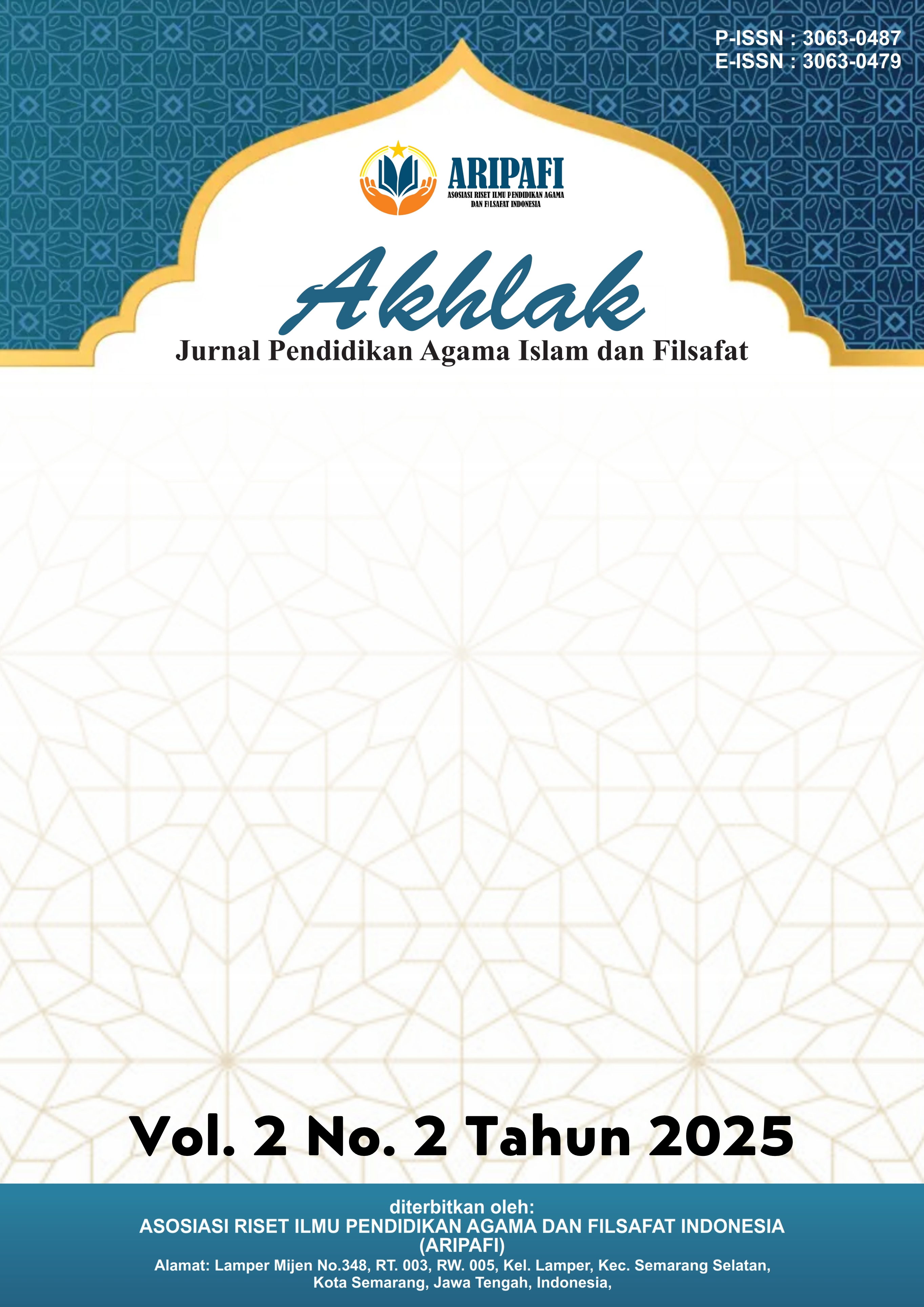Seni Muqabalah dalam Al-Qur'an Surat Al-Mulk
Studi Ilmu Badi’
DOI:
https://doi.org/10.61132/akhlak.v2i2.669Keywords:
Art, Muqabalah, Al-Qur'an, Surah Al-Mulk, Badi' ScienceAbstract
This article aims to analyze the use of muqabalah as a language style in Surah Al-Mulk and its impact on conveying moral and spiritual messages in the Al-Qur'an. Using a qualitative approach, this research analyzes verses containing muqabalah and discusses various contrasts that arise, such as life and death, courage and fear, and luck and loss. The methodology used includes literature study, tafsir, and rhetorical analysis to explore how muqabalah enriches the meaning of the text and increases reader understanding. The results of this research show that there is Muqabalah Khilafi in verse 3, Muqabalah Naziri in verse 15, and Muqabalah Naqidhi in verses 20, 21, and 22. These findings confirm that the use of muqabalah in Surah Al-Mulk not only clarifies the meaning, but also has a psychological impact profound for readers. The contrasts displayed serve to increase moral awareness and spiritual responsibility, as well as provide relevance to these messages in modern life. The uniqueness of this research lies in its emphasis on how muqabalah can be applied in learning the Koran in the contemporary era, as well as providing suggestions for increasing spiritual awareness through creative and relevant approaches. Thus, it is hoped that this research can contribute to a better understanding and application of the teachings of the Qur'an among Muslims.
References
Aiman, U., & Rahmah Siregar, M. D. (2017). USLUB MUQABALAH DALAM AL-QUR’AN. TAFSE: Journal of Qur’anic Studies, 1(1), 31. https://doi.org/10.22373/tafse.v1i1.8067
Al-Ashfahani, A.-R. (1999). al-Mufradat fi Gharib al-Quran. Beirut: Dar al-Ma’rifah, 502.
Al-Bâqilâny, M. al-T. (1992). I’jâz al-Qur’ân. Dâr al-Kutub al-’Alamiya.
Al-Jurjani, A. Q. (1954). Asrar al-balaghah. Cairo: Dar Marifah.
Al-Suyūṭī, Ğ. al-D., & ibn al-Ṭayyib, A. B. M. (1978). al-Itqān fīulūm al-Qur’ān. Muṣṭafā al-Bābī al-Ḥalabī.
al-Zarkashi, B. al-D. M. (1988). Al-Burhan fi’ulum al-Qur’an. Dar al-Fikr.
Kuntowijoyo, (1998). Islam dan Pemberdayaan (2nd ed.). Mizan.
Ma’luf, L. (1960). Al-Munjid fi al-lughah wa-al-adab wa-al-’ulum. al-Matba’ah al-Kathulikiyah.
Rumadani, S. (n.d.). Buku: Balaghah.
Yaʿqūb, I., & ʿĀṣī, M. (1987). المعجم المفصل في اللغة والادب: نحو, صرف, بلاغة, عروض, املاء, فقه اللغة, أدب, نقد, فكر أدبي. (No Title).






